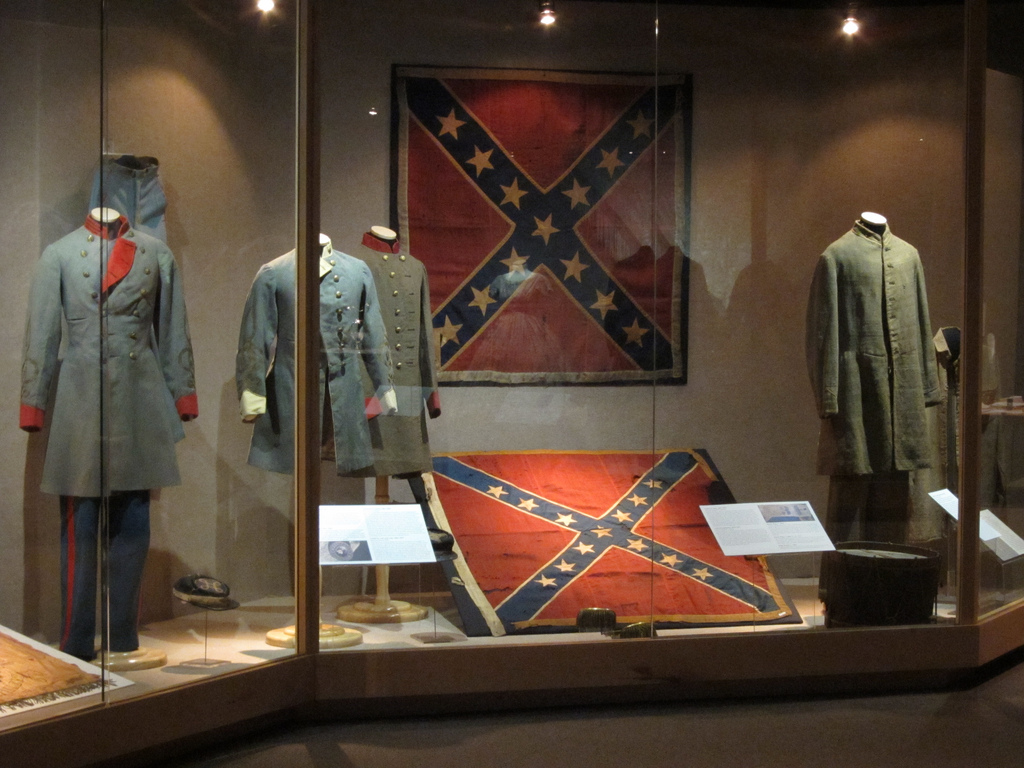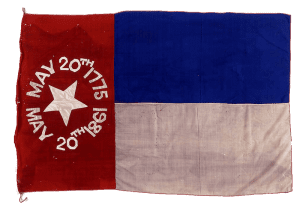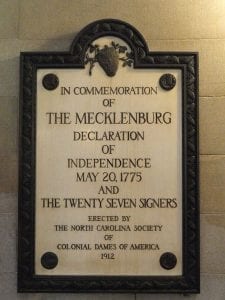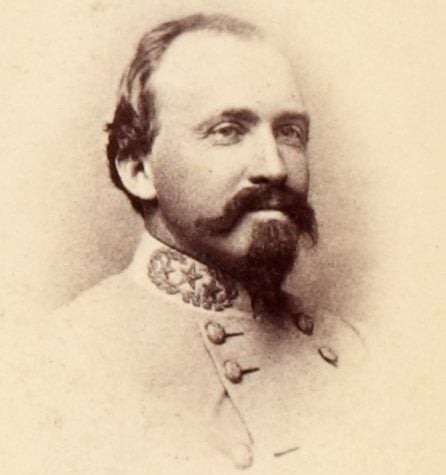

By spring of 1861 seven states had left the Union, but majority sentiment in North Carolina was not in favor of secession. Then came April 12th and the bombardment of Fort Sumter in South Carolina. The Confederate cannon fire resulted in no deaths and only minor injuries, but three days later came an announcement from Washington.
Today we think of April 15th as the day Federal taxes are due, but in 1861 there was no income tax. However, that date became charged with emotion for another reason. President Lincoln issued a proclamation that included these words:
“Now, therefore, I, Abraham Lincoln, President of the United States, in virtue of the power in me vested by the Constitution and the laws, have thought fit to call forth, and hereby do call forth, the militia of the several States of the Union, to the … number of 75,000, in order to suppress said combinations…”
The “said combinations” was the formation of a Confederate States of America. Secretary of war Seward told the North Carolina governor that his quota of troops was two regiments, a total of 1,560 officers and men.
Governor Ellis responded with, “You can get no troops from North Carolina.”
Discussions had been ongoing in the state about the question of secession, many leading citizens being involved. One of these was Zebulon B. Vance, a man later to be twice elected governor of North Carolina. When word arrived of Lincoln’s summons, Vance, with arms upraised, was in the middle of a talk about preserving the Union. Here is what he later said:
“When my hand came down from that impassioned gesticulation, it fell slowly and sadly by the side of a secessionist.”
Any chance of a peaceful resolution had vanished, and North Carolina secession became official on the 20th of May, 1861. A Constitutional Convention created a flag ordinance creating the banner we know today as  the flag of the North Carolina Republic.
the flag of the North Carolina Republic.
North Carolina troops were rightfully proud of their state flag, and used it throughout the war. In fact, the people of North Carolina so admired this flag that no one can miss its influence on the existing state flag, adopted in 1885. It has had only only minor changes since, and continues to bear the other date found on the Republic of North Carolina flag: May 20, 1775. This is the date of the so-called “Mecklenburg Declaration of Independence” in 1776.
The Mecklenburg Declaration was a resolution of the citizens of Mecklenburg County, N.C., stating that they had separated from Great Britain. Let’s look at what led up to this.
In the early hours of April 19th, 1775, British General Gage dispatched soldiers toward two locations in Massachusetts. In Lexington his troops were to capture Colonial leaders Sam Adams and John Hancock. In Concord they were to seize gunpowder.
Warned by riders such as Paul Revere, William Dawes, and Dr. Samuel Prescott, about 70 American Minutemen swiftly gathered in Lexington to confront the 240 British Redcoats. Facing off, both sides were wary, unsure of what would happen. Suddenly a shot was fired, “The shot heard round the world.” Outnumbered, the Minutemen suffered seven killed and the British marched onward to Concord, joined by additional Redcoat forces.
By this time American militias had been able to gather in Concord, and the tables were turned. Lord Percy, who had led the British back to Boston after the Concord defeat, later wrote to London:
“Whoever looks upon them as an irregular mob will be much mistaken.”
The first American rebels had made their mark.
On May 19th, 1775, the elected representatives of Mecklenburg County met at the courthouse in Charlotte  to discuss rising tensions with the British government. On the same day an express rider arrived with news of the battles of Lexington and Concord. After hearing that British soldiers had killed and wounded fellow British citizens, resolutions were drawn up, including these words:
to discuss rising tensions with the British government. On the same day an express rider arrived with news of the battles of Lexington and Concord. After hearing that British soldiers had killed and wounded fellow British citizens, resolutions were drawn up, including these words:
“…we the citizens of Mecklenburg County, do hereby dissolve the political bands which have connected us to the Mother Country, and hereby absolve ourselves from all allegiance to the British Crown, …who have wantonly trampled on our rights and liberties—and inhumanly shed the innocent blood of American patriots at Lexington.”
North Carolina still honors these early Americans, men and women whom many feel may have been the first to declare their independence from Great Britain.




More Stories
General Dwight D. Eisenhower’s Reflection on Robert E. Lee
Sad Woke Charlottesville liberals Melt down infamous statue of Robert E Lee
NC Appeals Court rules for Town of Louisburg in removal of Confederate monument